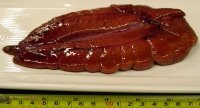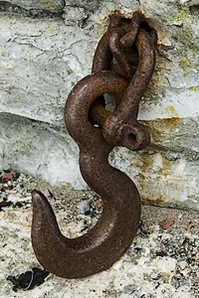 I’ll unleash a storm of precise imitation, a half dozen tell-all manuscripts, and turn both coasts of fly fishermen on their collective ear…
I’ll unleash a storm of precise imitation, a half dozen tell-all manuscripts, and turn both coasts of fly fishermen on their collective ear…
… and I’ve always wanted to do that, just once …
Having fished for American Shad for many years I’d always subscribed to the “attractor” theory; they smack flies out of spite/anger/curiosity but they didn’t feed in freshwater…
Conventional wisdom said, “Shad feed on krill and plankton in saltwater, but don’t feed while migrating…” This is “fishing wisdom” talking and after you get a similar response from the first nineteen fellows that know more than you – you stop asking.
A recent article in the American Fisheries Journal suggests Shad do feed in freshwater, but neither regularly or with much gusto..
(Extract follows – the article body is available only for purchase)
We evaluated the feeding habits of American shad Alosa sapidissima on spawning grounds in the St. Johns River, Florida. Feeding intensity in freshwater was generally low but highly variable. The items consumed were mainly pelagic (cyclopoid copepods and woody debris), although benthic (mollusks and sand) and surface (adult insects [Coleoptera, Hemiptera, and Odonata]) organisms occurred occasionally. The stomach fullness index varied by location for males, suggesting that ingestion is related to prey availability. Feeding by females also varied by location and continued during final oocyte maturation and active spawning. Egg cannibalism was suggested by the presence of some eggs morphologically similar to American shad eggs in the stomachs of males and females collected when females were running ripe. The results from diel sampling suggested that individuals consumed approximately 1.727 kJ/d in freshwater, which represents only a small fraction of the estimated daily energetic expenditure during the spawning run. Unlike iteroparous populations, Florida’s American shad probably do not conserve energy for out-migration. While this low incidence of freshwater feeding did not maintain fish weight, it may increase available energy and thereby increase fecundity.
Gives us something to think about. Shad don’t feed much and when they do eat mollusks, wood, shad roe, moths, damsel/dragonflies, and midges.
…which neatly explains why Shad are attracted to florescent flies with eye-watering vibrancy and dripping shiny … after completing a thousand mile journey to an exotic locale they’re sampling the local cuisine – same as we would.
 Before you run out for eleven dozen egg flies of steelhead vintage, shad eggs are about a size 20.
Before you run out for eleven dozen egg flies of steelhead vintage, shad eggs are about a size 20.
Calf liver would be a close approximation to an egg sack – but the bait issue would send you mincing about gashing yourselves in mock horror – so I’d go for a couple packs of rubber dogshit and shape it with a paring knife…
… that shouldn’t offend them delicate sensibilities too terrible much.

 I remember many years ago reading how Salmon meat coloration was a by product of its diet, and I can’t help feel for the Ph.D in the art department tasked with turning discolored and mushy salmon fillets into vibrant orange flesh.
I remember many years ago reading how Salmon meat coloration was a by product of its diet, and I can’t help feel for the Ph.D in the art department tasked with turning discolored and mushy salmon fillets into vibrant orange flesh.
 Nobody likes busting a fish off despite it being an annual Opening Day ritual. Hammy hands and adrenaline results in that sinking feeling where the knot can’t be blamed, the tippet was new, and only your Gorilla-like reflexes turned success into a shameful ruddy blush.
Nobody likes busting a fish off despite it being an annual Opening Day ritual. Hammy hands and adrenaline results in that sinking feeling where the knot can’t be blamed, the tippet was new, and only your Gorilla-like reflexes turned success into a shameful ruddy blush.
 Every guide has been there, a novice client attempting to learn fly casting while fishing, and for the want of practice no fish will grace the deck anytime soon.
Every guide has been there, a novice client attempting to learn fly casting while fishing, and for the want of practice no fish will grace the deck anytime soon. 40 Rivers to Freedom
40 Rivers to Freedom It’s a hotly debated topic among fish scientists, whether fish feel pain in the same manner as humans, despite differences in nervous systems and cognitive abilities.
It’s a hotly debated topic among fish scientists, whether fish feel pain in the same manner as humans, despite differences in nervous systems and cognitive abilities. Science like this should stifle them yawns, as it bespeaks of vast changes in your angling habits.
Science like this should stifle them yawns, as it bespeaks of vast changes in your angling habits. UK scientists plan on releasing a half dozen of these finned sniffing machines into the murky waters of Gijon, Spain. If successful we could expect to see the devices deployed in both freshwater and salt.
UK scientists plan on releasing a half dozen of these finned sniffing machines into the murky waters of Gijon, Spain. If successful we could expect to see the devices deployed in both freshwater and salt.